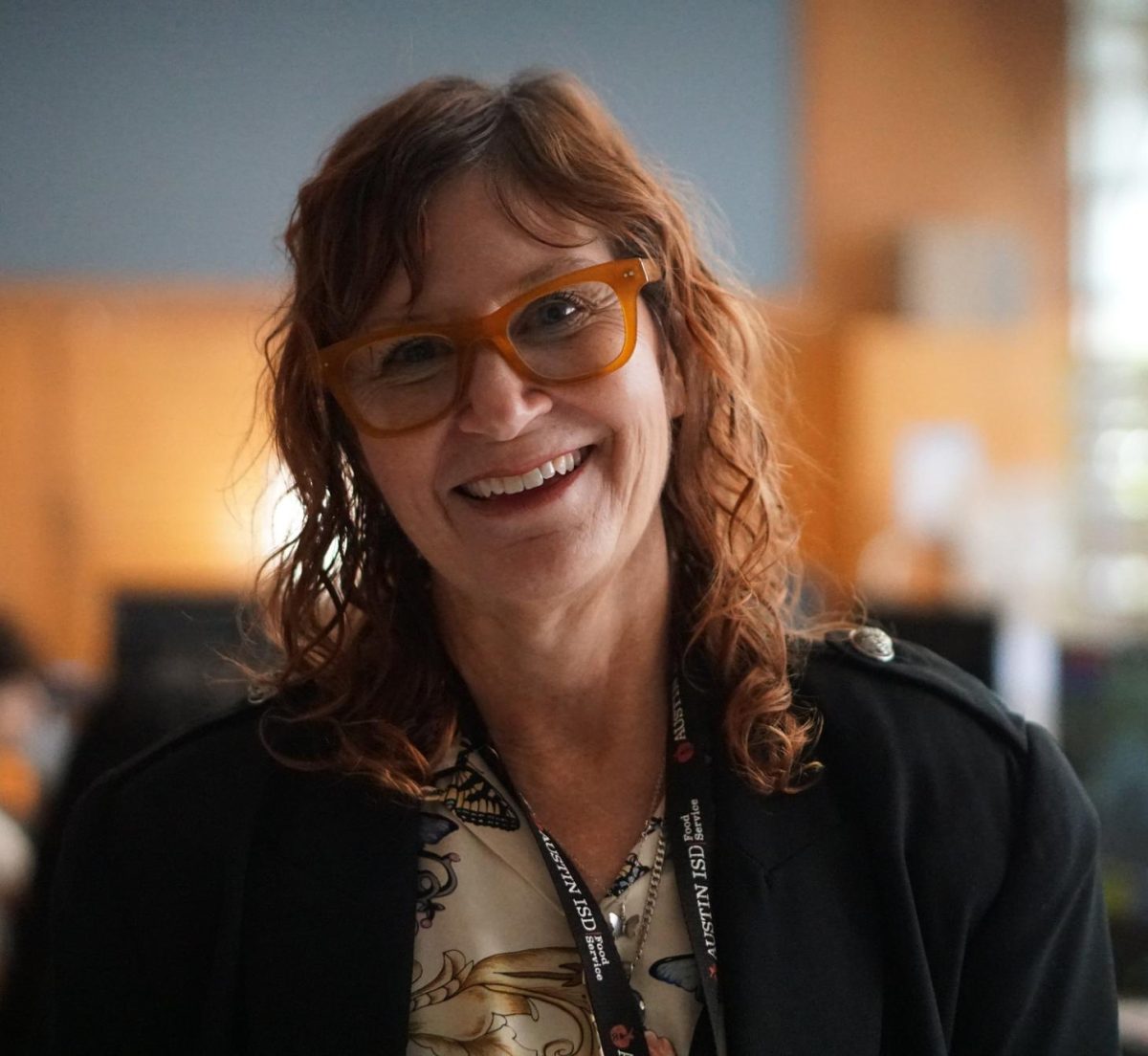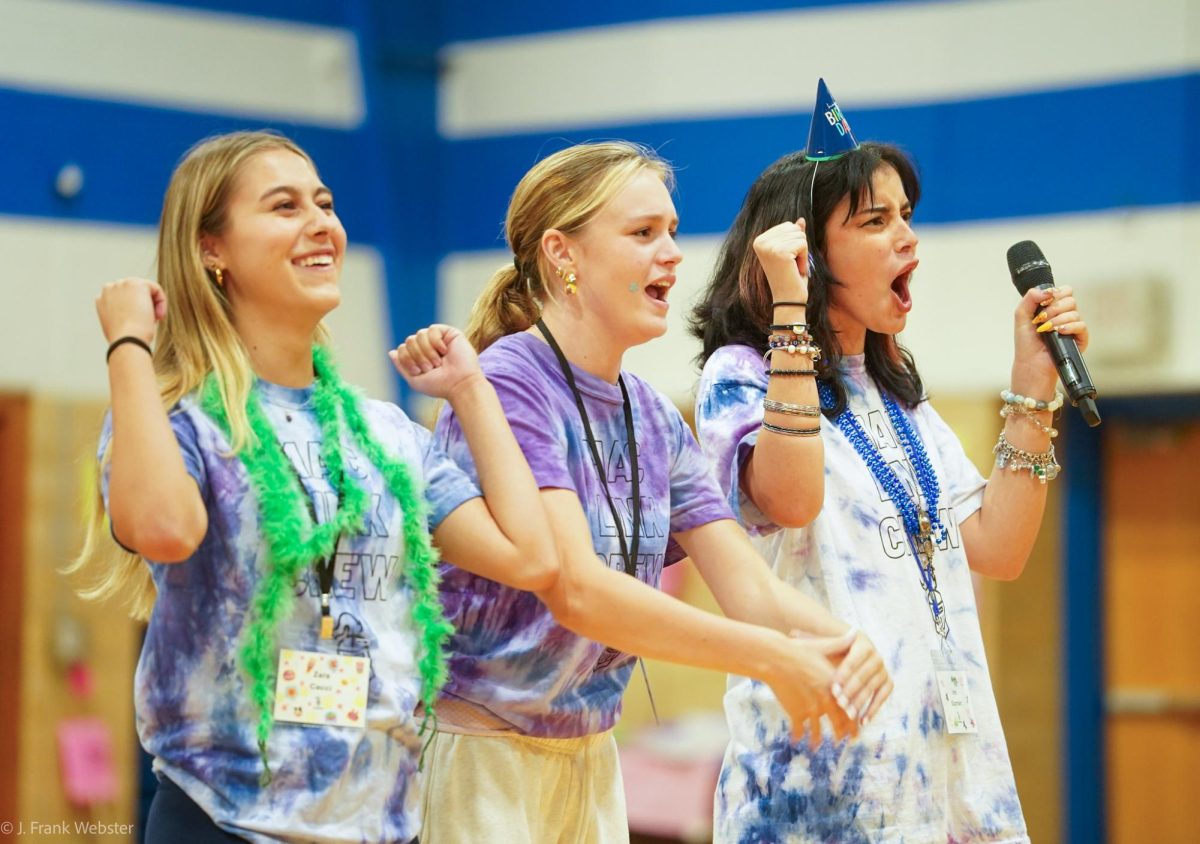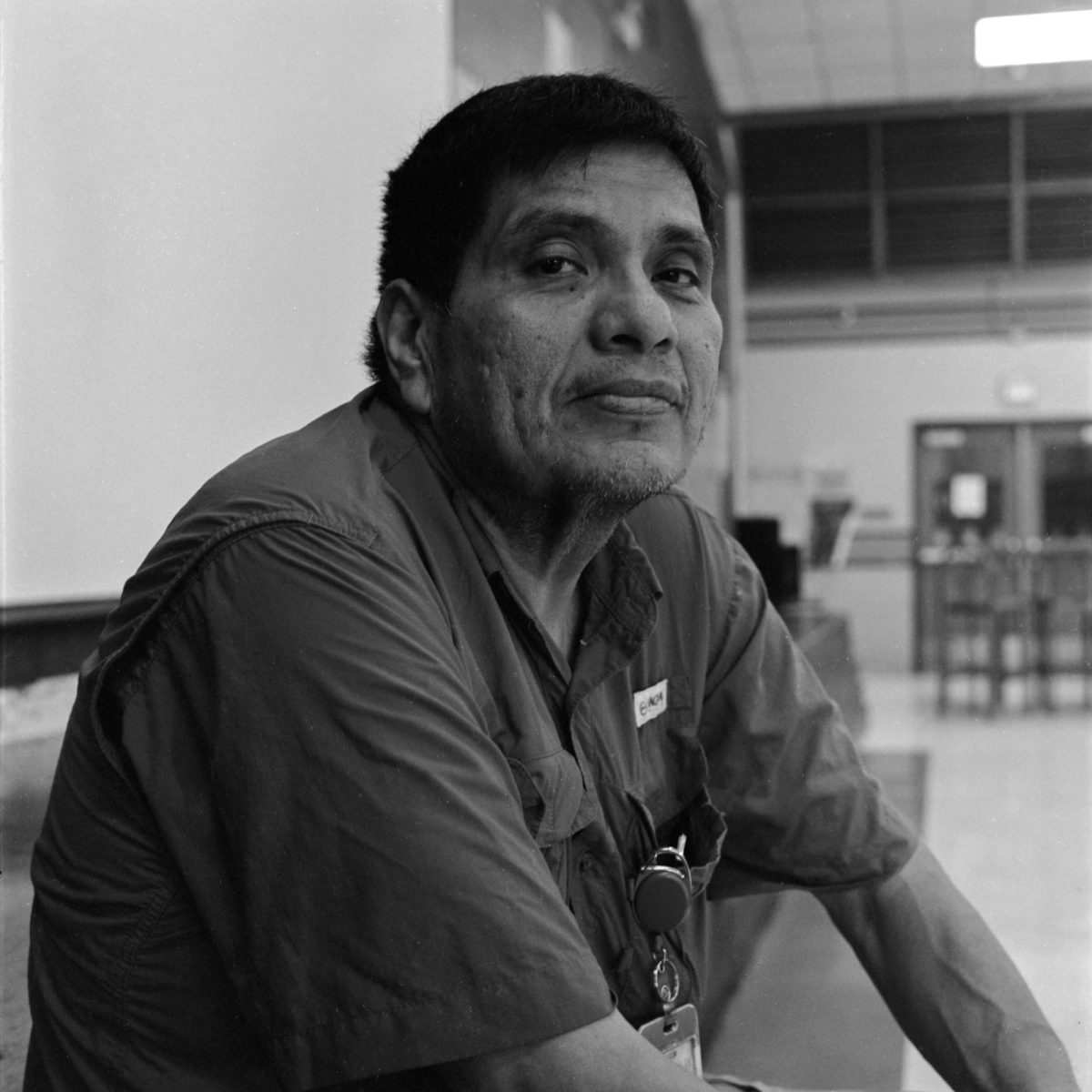Junior Sophie Kessler knows how to break into a house with a hammer. From CPR to crawling down a burning elevator shaft, she lives for the thrill of saving lives. As a member of the LBJ Fire Academy, a two-year fire and EMS certification program available to high school juniors and seniors, Kessler is learning how to be a real-life hero.
For as long as Kessler can remember, she has dreamed of becoming a paramedic. As a child, she carried around a toy medical kit. As a middle schooler, she binge-watched medical dramas. Just the other day, she watched paramedics in action, star-eyed. That’s why Kessler, a student in LBJ Fire Academy class 17, sent in her application five months before it was due. There was no way she could pass up the opportunity to spend her days learning how to save lives.
“There’s something that’s always been thrilling to me about giving first aid to people or being able to provide people with medical care,” Kessler said. “I’ve always wanted to be an EMT or a paramedic, and I saw that the Fire Academy could certify me for EMT. Basically, I can start doing the career that I’ve always wanted, straight out of high school.”
Kessler prefers to live in the challenge zone. She runs toward the things that she has never seen anyone do, things that keep her on her toes. But as she boarded the bus to LBJ High School on the first day of school, she was so nervous she thought she was going to cry.
“I didn’t know what was happening,” Kessler said. “But then I got there and everybody was so welcoming and accepting. It felt so real. I was like, ‘This is going to set me on the track to literally do what I want.’ It was so exciting, pivotal almost. I was like, ‘This is totally different, a totally different kind of passion.’”
Out of the 22 students in her Fire Academy class, Kessler is the only one from McCallum. She boards a bus at 8:30 a.m. every other morning and has her alone time on the drive to LBJ. As she sips on her morning Gatorade, she prepares to fight fire, fatigue, exams and any other challenge that might come her way. But when she walks into the run-down Fire Academy portable halfway across town and sees the faces of her fellow firefighters-in-training, she knows it’s going to be a good day.
“I’m usually happier when I walk into that room,” Kessler said. “It’s the people there that bring it together, and it’s such a strong community. Everybody gets along. It doesn’t really have a lot of funding, so everything’s ratty, but nobody complains because everybody’s just in it together.”
LASA junior Eunhyo Mah said her favorite part of the Fire Academy is that for three hours every other day, students from all walks of life encourage and support each other as a team. Mah believes that Kessler’s positive attitude makes fire class better for everyone around her.
“I remember seeing Sophie on the first day with her winged eyeliner and grunge T-shirt or something and thinking she looked really fun,” Mah said. “But I was sort of intimidated so it took a while for us to actually talk for the first time. When we did, though, she was so sweet and funny, and I just loved her. She definitely made that initial nervousness of a new class with new people easier and, to date, class is far more enjoyable with her. I think she’s a really important part of the mesh of our fire class.”
At exactly 9:05 a.m., class 17 gets down to business. The students pull their gear out of a giant shipping container and take on the day’s three-hour lesson that will involve a slideshow, a test, physical labor or all three.
LBJ Fire Academy director Leon Hudson only has two rules: no one gets hurt and no one breaks any expensive equipment. According to Hudson, less than 1% of Fire Academy students go into fire service, many instead choosing to attend college or pursue other career paths. In his mind, the Fire Academy isn’t just training firefighters and EMTs, it’s also shaping young adults.
“My favorite part of this whole thing is watching young people mature and develop skills that are transferable to any career field in life,” Hudson said. “Through the program, they develop leadership skills, and they develop the confidence in themselves to step forward in any situation and introduce themselves. They become well-rounded individuals.”
In order to prepare students for the dangers and challenges that come with the job, the Fire Academy curriculum is rigorous. Students are assigned textbook chapters written by the National Fire Commission to prepare them for the 50-question exam at the end of each week. Kessler said that the first and biggest challenge she faced in the Fire Academy was studying for written tests.
“It’s just so much,” Kessler said. “That was definitely the worst part for me because I’ve never really been good at studying anything. My motivation for getting over that was that this was something more real than school. Like, I’m not studying Abraham Lincoln; I’m studying how to save lives.”
Another challenge was physical fitness. The Fire Academy curriculum includes learning skills like donning and doffing (getting suited as fast as possible), breaking down a door with an axe and crawling through confined spaces. Then, students take off the gear and do it all again. Going into the Fire Academy without much muscle, Kessler felt like the odd one out.
“Most people there are very, very strong, and I am not quite as strong,” Kessler said. “For a while, it was almost embarrassing how different I was from most of the class, but then I realized that sometimes it’s not about strength, it’s about mental state and how you want to push yourself. I also started gaining a little bit of muscle, which definitely helped.”
Every few months, the Fire Academy has “skill days” where students put on full gear and strap on an oxygen tank. Kessler remembers standing out in the heat and doing a workout circuit while breathing with a limited amount of air. The students either kept going until their air ran out, or they passed out.
Kessler said that at that moment, the looks on everyone’s faces were beyond miserable. But when it was over, the firefighters-in-training were more bonded than ever before.
“Just the fact that we all made it through that anyway was inspiring,” Kessler said. “Some people made it twice as long as I did. It gives you a lot of respect for someone seeing them do that.”
While teaching Kessler how to tie knots and then hoisting axes and chainsaws, Hudson watched Kessler attack the challenge. By the end of the lesson, she could do it with her eyes closed.
“She doesn’t give up, and she’s tenacious,” Hudson said. “She had a challenge with a couple of knots, but she just kept going and going until she had it figured out.”
Kessler knows that in a firefighter’s world, it takes a team to get things done. The support of her classmates and her commitment to the end goal help her find the strength to keep going.
“The first time I raised the 225-pound ladder, everybody was cheering me on,” Kessler said. “The whole time I was like ‘I’m going to throw up, this is miserable.’ But I could see the little light at the end of the tunnel. I was like, ‘I need to get there and this is the only way.’ Once I did it, it was the best feeling ever.”
Mah said that Kessler inspires her to be brave and step out of her comfort zone. For her, Kessler’s companionship can turn even the most brutal skill day into a fun time.
“I have a lot of small memories of us struggling and complaining and then laughing about it together on our first skill day, taking BeReals on ladders, hanging back and watching other people do some questionable things and just talking during downtime in class,” Mah said. “Sophie’s always so funny and easy to talk to, so I think some of my best memories are just of us talking about random things during skill practices. It’s like we’re on the same brainwave.”
Through the Fire Academy, Kessler has gotten a taste of the mental, physical and emotional dedication it takes to be a first responder. She has learned study strategies, leadership skills and self-respect. After months of fiery tests of strength, Kessler’s passion for saving lives only burns brighter.
“The skills you learn and the people you meet and the community that grows is beyond life-changing,” Kessler said. “It’s inspirational, and it’s useful because who else knows how to break into a house with a hammer?”










isabella m • Feb 17, 2023 at 1:51 pm
The reason why I liked this article was because of how passionate the person is about firefighting. Everything in the story was pretty good and well said, but the only thing I didn’t like was the too many details about little things. Everything else was well structured and the quotes were well fitted in. I liked the main picture because it shows the main person this story is about, in action, doing what they love to do. I also liked that they had a lot of big quotes on each side and there was a pattern to it, going right to left.
julia copas • Dec 15, 2022 at 12:02 pm
I really liked this article. I think it did a really good job of highlighting something that many Mac students (including myself) might not know much about. I had no idea that anyone from Mac went to the LBJ Fire Academy, and I also didn’t know how strenuous it could be.